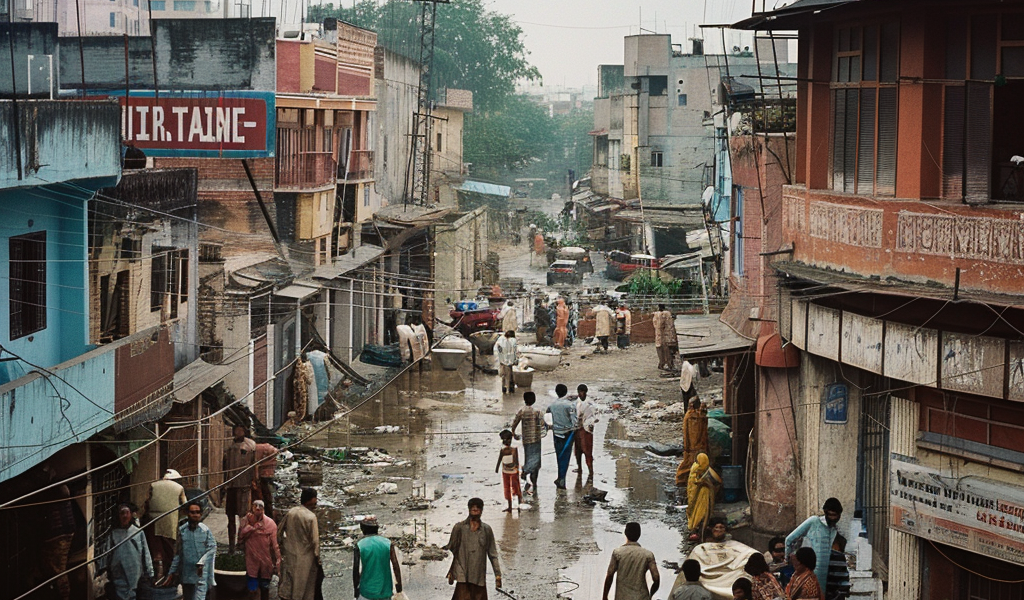The recent surge in dengue fever cases across Uttar Pradesh, especially in the capital city of Lucknow, has emerged as a critical public health challenge. In 2024 alone, over 2,100 cases have been reported, with a staggering 400 cases occurring in just one week of October. This alarming trend is not merely a local issue; it reflects broader global challenges that are being exacerbated by climate change and rapid urbanization.
Analyzing the Data: A Disturbing Trend
The increase in dengue cases in Lucknow over the past few years paints a concerning picture. Reported cases soared from 1,104 in 2021 to 2,700 in 2023, with 2024 showing no signs of alleviation. Hospitals in the city are experiencing unprecedented pressure, with the demand for platelet units doubling from 200 to 400 daily to treat severe cases. The combination of Uttar Pradesh’s dense population, stagnant water, and inadequate urban infrastructure creates an ideal breeding ground for the Aedes aegypti mosquito, the primary vector for dengue.
The Climate Connection: Rising Temperatures and Altered Rainfall Patterns
Climate change has played a significant role in the current dengue outbreak in Uttar Pradesh. Warmer temperatures, particularly at night, have extended the breeding season for mosquitoes. In October 2024, the region experienced its highest average night temperatures in over a century, with Lucknow recording nighttime temperatures 3°C above the normal levels. Additionally, heavy monsoon rains followed by delayed withdrawal have led to prolonged waterlogging, creating numerous breeding sites for mosquitoes. Research indicates that rising global temperatures and changing rainfall patterns are likely to expand the reach of dengue to previously unaffected areas, including parts of northern India, Europe, and North America.
Urbanization and Mosquito Adaptability
The rapid pace of urbanization has further complicated the dengue situation by creating new habitats for mosquitoes. In densely populated areas like Lucknow, discarded containers, clogged drains, and rooftop water tanks have become prime breeding sites. The population density in Uttar Pradesh has surged dramatically from 155 people per square kilometer in 1961 to 469 in 2021, intensifying the challenges associated with managing vector-borne diseases.
Healthcare Under Strain: Ground-Level Challenges
The surge in dengue cases has highlighted significant weaknesses in Uttar Pradesh’s healthcare infrastructure. Hospitals, such as Balrampur Hospital, are operating at full capacity, with dedicated wards for dengue patients overflowing. Healthcare professionals are grappling with the dual challenges of treating an increasing number of patients while also managing the limited resources available to them. The heightened demand for medical care has strained the existing system, revealing the urgent need for improvements in public health infrastructure.
Preventive Measures and Public Awareness
In response to the escalating dengue crisis, local health authorities are ramping up efforts to raise public awareness about the disease. Educational campaigns are being launched to inform residents about preventive measures, such as eliminating stagnant water and using mosquito repellents. Community engagement is crucial in fighting the spread of dengue, as local populations play a vital role in identifying and addressing potential breeding sites.
Government Response: Policies and Initiatives
The state government is also taking steps to combat the dengue outbreak. Initiatives include increased surveillance of mosquito populations, enhanced vector control measures, and the establishment of rapid response teams to address outbreaks in affected areas. Additionally, the government is collaborating with non-governmental organizations to implement community-based interventions aimed at reducing mosquito breeding sites.
The Role of Climate Action
Addressing the underlying issues of climate change is essential for long-term solutions to the dengue crisis. Policymakers are being urged to prioritize climate action and sustainable urban development to mitigate the impacts of climate change on public health. Strategies such as improving drainage systems, increasing green spaces, and promoting sustainable land use can help reduce the risks associated with vector-borne diseases like dengue.
Conclusion
The dengue outbreak in Uttar Pradesh serves as a stark reminder of the interconnectedness of climate change, urbanization, and public health. As the state grapples with rising case numbers, it is imperative to adopt a multifaceted approach that addresses both immediate healthcare needs and the long-term challenges posed by environmental changes. The health of communities in Uttar Pradesh, and beyond, depends on our collective efforts to combat the factors driving the dengue surge.





